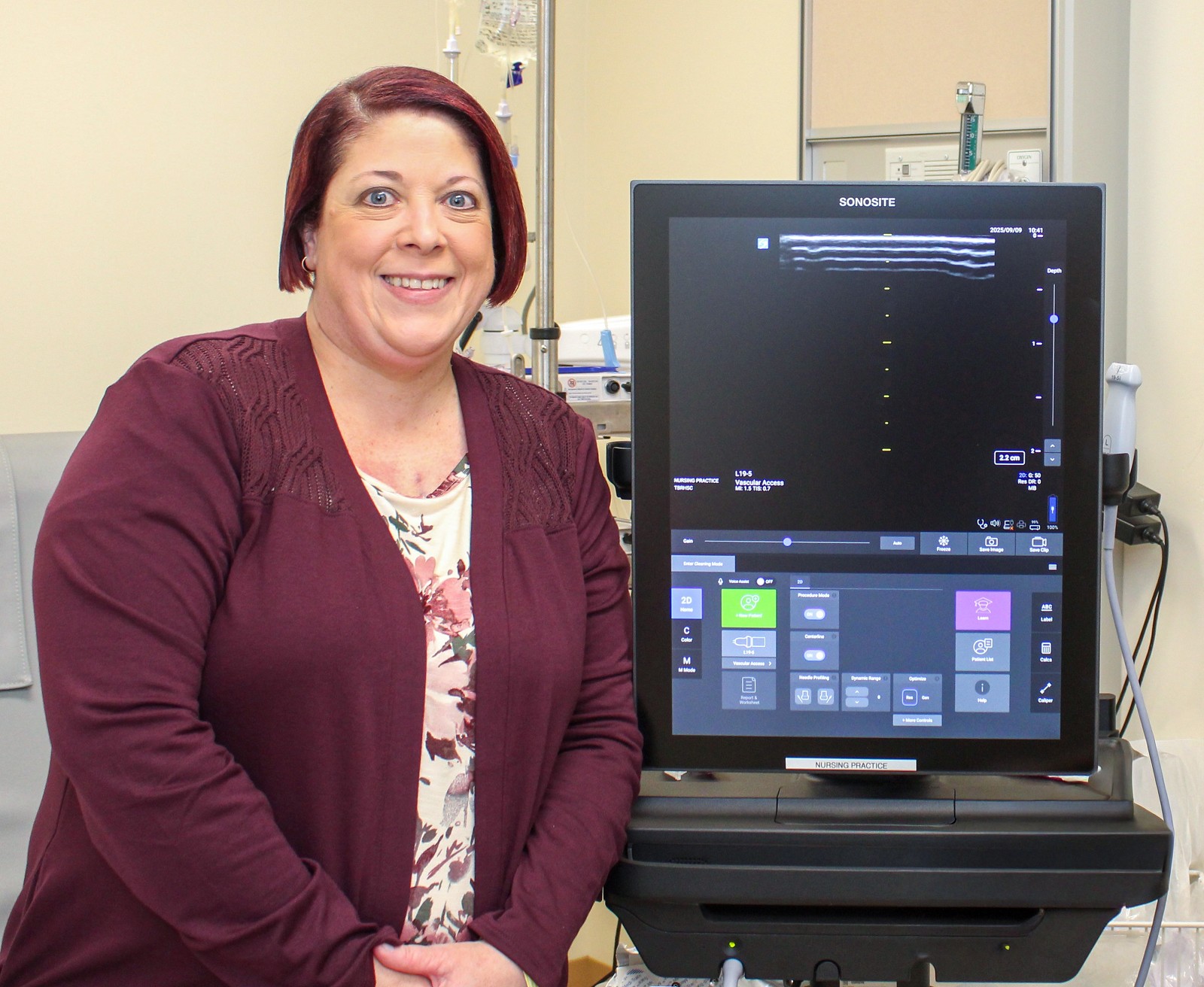“I Was Praying, ‘Please Help Them Find a Vein'”
Published Tuesday, September 16, 2025

Thanks to donor support, the Thunder Bay Regional Health Sciences Centre has a new vascular access ultrasound system. Shawna Scopacasa, who relies on daily IV treatments, says the technology has been “literally life-changing.”
Your Impact: How You Helped Answer Shawna Scopacasa's Prayer with a New IV Ultrasound Unit
Shawna Scopacasa has a rare kidney disease that robs her body of electrolytes. That means for six hours a day, every day for the last 11 years, she's had to go to Ambulatory Care at the Thunder Bay Regional Health Sciences Centre for IV infusions. Shawna will have to do that for the rest of her life.
“My veins got to be so bad that sometimes it would take six to 10 pokes to get an IV in me,” Shawna said.
Keep in mind, these are experienced nurses. Over time, regular IV inserts can damage the veins, making it difficult for even skilled nurses to start an IV.
Patients needing daily treatments normally receive a PICC line or port-a-cath, a medical device implanted under the skin that provides long-term access to a vein. Shawna has a port, but her sensitive skin reacts to the dressing needed to keep the IV tubing in place, so her care team can only access it for short periods of time.
Now, thanks to your support of the Thunder Bay Regional Health Sciences Foundation through donations, fundraising events, and Thunder Bay 50/50 ticket purchases, the Hospital has a new vascular access (VA) ultrasound system that finds suitable veins often deeper under the skin. That means faster IV insertions, less pain, and vastly improved patient comfort.
“Now, Justin (Ross) can get the IV in with just one poke,” Shawna said. “It's literally life-changing.”
Justin Ross is a Vascular Access Clinical Nurse Specialist at the Hospital who trained specifically on this type of ultrasound unit to reduce the number of pokes for patients.
Anyone who's experienced the pain of multiple attempts to insert an IV understands the physical and psychological ordeal. That was a weekly reality for Shawna.
“I remember one time I was in Emerge and they were doing everything to get the IV in: hot compresses, elevating my arm, palpitating it. I was praying, ‘Please, help them find a vein.'”
Sometimes, it could take two hours to find one, which meant her six-hour treatment suddenly turned into eight.
“Some days I'd be in tears saying I can't do it anymore.”
But walking away was never an option for Shawna. One missed treatment, and she could be at risk of cardiac arrest or seizures.
The ultrasound system uses high-definition imaging that can find veins, assess them for size and health, and help guide the needle in. The real miracle of the technology is that it can find veins deeper under the skin not visible without it.
“When Justin first used the ultrasound with me, I warned him that I didn't have any good veins,” Shawna said. “He said, ‘I see lots of great veins here.' He had the IV inserted in minutes, one poke.”
The new ultrasound unit is the second system at the Hospital. Not only is it an upgrade from the first system, the added capacity reduces wait times significantly. Shawna hopes more people can be trained to use the ultrasound device and would like to see more systems available in the Hospital.
“I want everyone to know about this technology. It's such a huge improvement for patient care!” she said.
This is one of the miracle stories you helped bring to life thanks to your support of the Thunder Bay Regional Health Sciences Foundation. Make a donation, attend a Foundation event, and buy a Thunder Bay 50/50 ticket. You'll help answer even more prayers for patients like Shawna.
Article by: Graham Strong